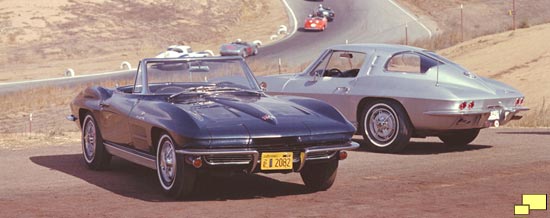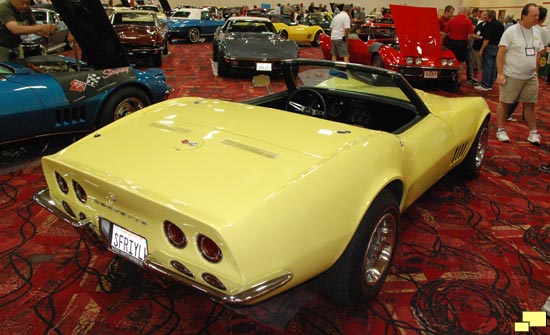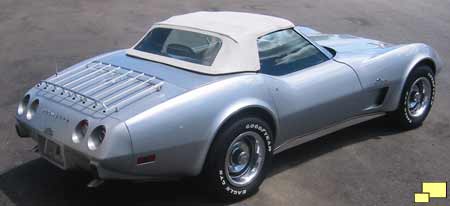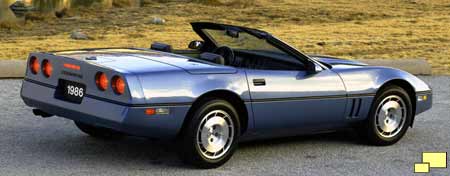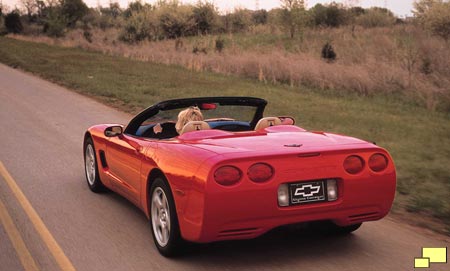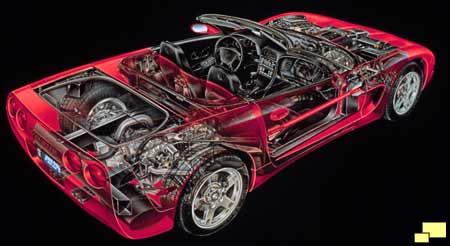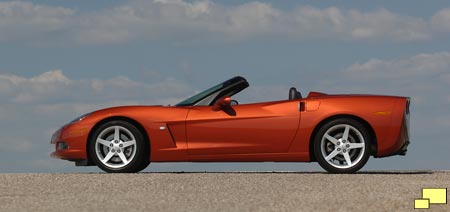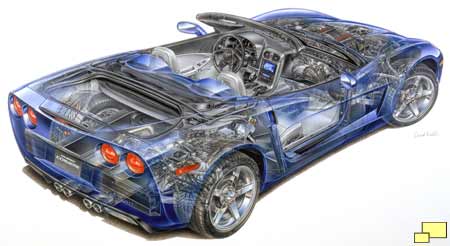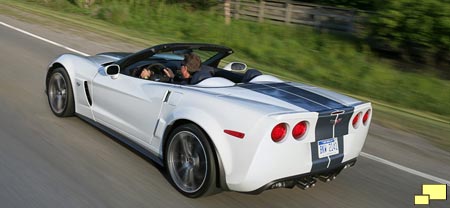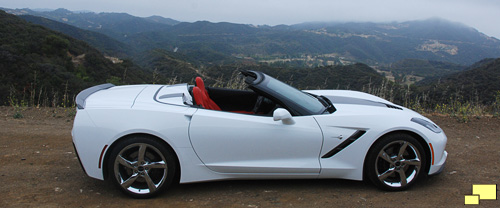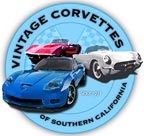
|

|
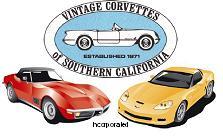
|
Corvette Convertible Statistics
Publisher, The Corvette Story
In order to convince me that a Corvette has a place in my garage, it has to be two things: A convertible and manual transmission equipped. No offense to my coupe / automatic Corvette owning friends; there is a lot to be said for that configuration.
But wind in my hair is an essential part of the Corvette owning experience.

If you start with the C1 generation, there isn't much to talk about since every one of those is a convertible.
But starting with the C2 in 1963, things got interesting.
The other four C2 model years saw convertibles achieve significant favorite son status from 62% to a high of 65.26% in 1965. All other Corvette generations had convertible production below 40%.

Things got a little strange in 1968, the start of the C3 generation as can be seen at the Corvette Convertible Statistics PDF page. 1968 had a 65.22% convertible quantity, yet the rest of the C3 model year was nowhere near that, going from 42.91% in 1969 to a low of 12.10% in 1975.
What happened is that when the new generation 1968 C3 was introduced in 1967, only convertibles were available. Originally the coupe was to feature a full targa style roof, similar to what was eventually used in the C4. The chassis however suffered from torsional stability problems - the roof could not be removed or installed unless the Corvette was on a flat surface. This meant that the first ~10,000 1968 Corvettes were all convertibles. A panicked effort resulted in the T-Top design and its' production started in January 1968. The situation was a problem for the convertible top supplier who was initially told that 60 units a day would work but then had to produce twice that. Compounding the situation was that if a customer liked and wanted the new body style of the C3, their only choice was the ragtop.
As the 1970s progressed, convertibles in general started to fall out of favor. Safety concerns were part of the reason as was the fear that regulations, which never came about, would outlaw convertible production. 1975 was the last year a C3 ragtop Corvette was available; only 4,659 (12.10%) were built.

After 10 years a convertible Corvette was available for 1986. Considering that the world had been without a topless 'vette for some time, sales were minimal at only 7,315 or 20.84% of the 1986 production. The next four years saw the convertible production in the low to mid 30% range. The C4 convertible saw 27.91% penetration for the 11 model years it was available.
One factor was pricing; at $32,032 the convertible was $5,005.00 or 18.52% more than the coupe with the convertible cracking the $30,000 Corvette price point for the first time. Both the C2 and C3 convertibles were cheaper by $215.00 (1963) and $343.00 (1968) than their coupe counterparts.

1997, which saw the introduction of the C5 generation, did not feature a convertible. This is not hard to understand as when it was introduced, the C5 consisted of an entirely new chassis, body style and drivetrain; a case can be made for the C5 being the only Corvette generation to do so. The effort expended by the engineering and product planning people to accomplish this was huge so it's easy to see why a convertible was not part of the mix.
All was back to normal in 1998 when the ragtop C5 became available. 11,849 were sold or 38.12%. At $44,425.00, the convertible cost $6,930 (18.48%) more than the coupe.
C5 Corvette convertible production averaged 37.49% for the seven model years it was available or 10% more than the C4. The year 2000 saw convertibles at 40.02% of the total sales and is the only Corvette model year since 1970 to top 40%.

The C6 generation soldiered on with a convertible available for all nine model years. Convertibles made up 26.90% of C6 production. At $52,245.00 the convertible commanded an $8,000 or 18.08% premium over the coupe. Here's an interesting factoid: The C4, C5 and C6 convertibles all had an 18% markup over the coupe. Coincidence?
For most of the C6 generation the convertible had a market share in the low - mid 20 percent range. That changed in 2013 which saw a 37.19% share. The reason is not hard to figure out as it was the only year that the wonderful 427 LS7 engine was available in a convertible. Production quantity was 2,552 (18.95%).

C7 convertible production started strong in 2014 with a 29.40% market share. That would be the peak for the C7; the final total would be 19.69%. That could change since as of this writing (June 2019) the final tally for the C7 is TBD.
|
Corvette Convertible Popularity
By Generation |
||
| C2 | . . . . . . . . . . . . . . . . . . . . | 63.81% |
| C5 | . . . . . . . . . . . . . . . . . . . . | 37.49% |
| C3 | . . . . . . . . . . . . . . . . . . . . | 29.54% |
| C4 | . . . . . . . . . . . . . . . . . . . . | 27.91% |
| C6 | . . . . . . . . . . . . . . . . . . . . | 26.90% |
| C7 | . . . . . . . . . . . . . . . . . . . . | 19.69% |
